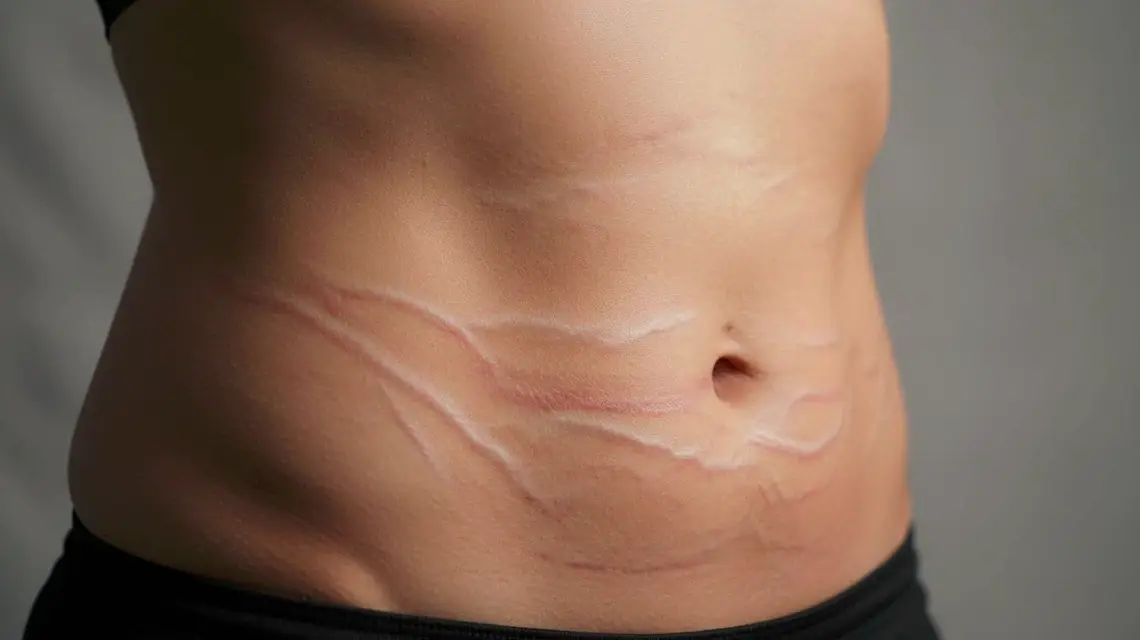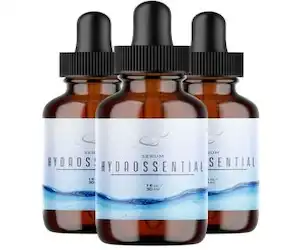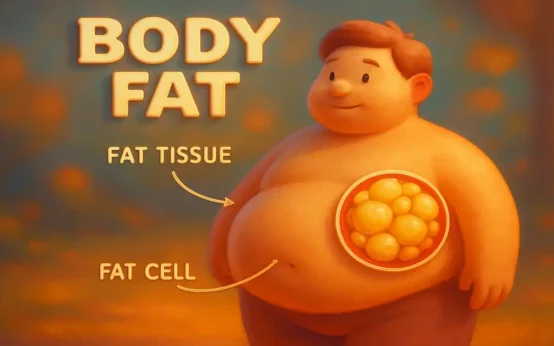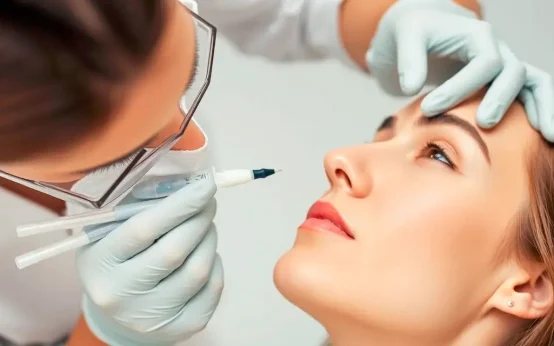How long will your stretch marks stick around? You are not alone for wondering. Stretch marks, also called striae, form when skin stretches faster than it can rebuild collagen and elastin. The simple truth, most marks fade in color over time, yet the texture rarely disappears completely.
With care and patience, they can become much less noticeable. In this guide, you will learn what affects fading, realistic timelines by type and cause, what actually helps, safety tips, costs, and when to see a dermatologist. By the end, you will have a clear answer to in how much time stretch marks to fade, plus a plan you can follow at home.
What makes stretch marks fade faster or slower
Stretch marks fade on their own, but speed is not the same for everyone. The timeline depends on your skin, the age of the marks, hormones, and habits. Think of fading like a dimmer switch, not a light switch. Color usually softens first, then texture slowly improves.
Here is why time varies:
- Age of the marks: Early red or purple marks respond better to care than older white ones.
- Skin type and genetics: Your skin tone and family history shape how color shifts and fades.
- Hormones and body changes: Active stretching from pregnancy, puberty, weight change, or training slows progress.
- Sun and lifestyle: UV darkens marks and breaks collagen, while sleep, hydration, and steady weight support repair.
Each factor acts like a traffic light. Some turn green for faster fading, others flash yellow and add months to the process. You cannot control genetics, but you can stack small wins, sunscreen, steady weight, and a simple routine.
Age of the marks: red or purple vs white
Fresh stretch marks, called striae rubrae, look red, pink, or purple. Blood vessels sit close to the surface, which is why they stand out. Collagen is still remodeling, so early care can guide smoother healing.
Older marks, called striae albae, look white or silvery. Blood vessels have faded, and collagen is more set. They can still soften, but it takes longer. Texture change is slower because the skin has already rebuilt in a thinner pattern.
Starting care early can shorten the window, yet even old marks can improve with steady work.
Skin type, color, and genetics
Skin tone affects what you notice first. Darker skin may show more color change or hyperpigmentation, which can take longer to even out. Lighter skin tends to show texture and fine lines more than color shifts. Family history matters too. If your parents have stretch marks, you are more likely to get them and they may take longer to fade.
Body changes and hormones
Rapid growth or stretching, like pregnancy, puberty, weight change, or intense bulking, stresses the skin. Cortisol and other hormones can thin the skin’s support fibers, which slows repair. While your body is still stretching, fading stalls. Once the stretch calms, improvements pick up again.
Sun, weight swings, and lifestyle habits
Sun exposure keeps marks darker and slows collagen remodeling. Smoking reduces blood flow and delays healing. Poor sleep and low hydration do not help either. Simple choices matter:
- Daily sunscreen on exposed areas helps color fade faster.
- Steady weight reduces new tears in the skin.
- Gentle care, not harsh scrubs, avoids extra irritation.
- Good sleep and enough water support collagen repair.
In how much time stretch marks to fade? Real timelines you can use
Every body is different, yet there are helpful windows to plan around. Color usually softens in months, texture change takes longer. You will likely see progress before a year, though full erasing is uncommon. Results vary, and consistent care speeds things up.
- New marks, color fade can start within months. Texture improves more slowly.
- Old marks, gradual softening can continue for years. Texture changes, but often stays a bit thinner.
- By cause, pregnancy, puberty, weight change, and training have different patterns and common spots.
- By body area, tension and skin thickness shape the pace.
Your skin will not flip to smooth overnight. Expect small wins, then stack them.
New stretch marks timeline (0 to 12 months)
In the first year, red or purple color often fades most. Many people notice the bright tone soften, then edges blur. Texture is slower to change. Early care helps guide collagen as it rebuilds. Keep your routine steady for several months before you judge results.
Old stretch marks timeline (1 to 3 years and beyond)
Mature white marks take time. Expect gradual softening and a smoother edge over one to three years. Full erasing is unlikely. If you choose in-office treatments, a series can compress the timeline, but you still need months for the skin to remodel. Maintenance care supports the gains.
By cause: pregnancy, puberty, weight change, gym growth
- Pregnancy: Marks often show on the belly, breasts, hips, and thighs. Color tends to fade in the first year postpartum, texture keeps improving into year two and beyond.
- Puberty: Growth spurts can create marks on the back, thighs, hips, and breasts. Color fades within a year or so after growth slows, texture softens over time.
- Weight change: Quick gain or loss brings marks on the belly, hips, arms, and thighs. Fading starts once weight stabilizes, not during rapid swings.
- Gym growth: Heavy bulking can mark shoulders, arms, and chest. If training cycles are steady, color can fade within months, texture improves with time.
By body area: belly, thighs, hips, breasts, arms
Areas under high tension, like the belly or outer thighs, often show slower texture change. Spots with thinner skin, like breasts and inner arms, may show lines longer. Hips and buttocks often keep faint lines even after color fades. These patterns are normal and expected.
What actually helps fade stretch marks faster
You can speed fading with smart daily care, targeted topicals, and, if you choose, clinic treatments. The goal is simple, protect color, support collagen, and avoid irritation. Keep choices safe if you are pregnant or breastfeeding.
Daily care at home that works
- SPF 30+ every day: UV darkens marks and slows repair. Sunscreen helps color fade faster.
- Steady weight: Fewer swings mean fewer new tears in the dermis.
- Gentle cleanse: Avoid harsh scrubs. Use a mild wash, warm water, and pat dry.
- Rich moisturizer: Creams or oils trap water, which makes skin more elastic. Hydrated skin looks smoother and heals better.
- Light massage: A minute or two can boost local circulation. Use small circles and light pressure.
Why it helps, hydrated, protected skin remodels better. Small daily choices add up.
Topical treatments with evidence
- Tretinoin or prescription retinoids (for new marks, not safe in pregnancy): Promote collagen and faster cell turnover. Usually need 8 to 12 weeks for early changes, with gains building for months.
- Over-the-counter retinol: Gentler cousin of tretinoin. Often needs 12+ weeks for visible change.
- Hyaluronic acid: Hydrates and plumps. Helps the look of texture within weeks when used daily.
- Glycolic acid: Supports cell turnover. Start low strength a few nights a week.
- Vitamin C: Antioxidant that supports collagen and brightens tone. Use in the morning under sunscreen.
- Peptides: May support firmness when used long term.
- Silicone gel or sheets: Help flatten and soften the look of scar-like lines, especially with consistent use.
Layering tip, cleanse, apply actives like vitamin C in the morning, sunscreen on top. At night, cleanse, apply a retinoid or glycolic (alternate if sensitive), then seal with moisturizer. Oils and cocoa butter feel nice and improve comfort, but proof for fading is limited. If you like them, use them for moisture on top of actives.
Clinic treatments that speed results
- Microneedling: Tiny needles trigger collagen. Plan 3 to 6 sessions, spaced 4 to 6 weeks apart.
- Fractional lasers: Create controlled micro-injury to remodel texture. Often 3 to 5 sessions, with steady gains over 3 to 12 months.
- Pulsed dye laser: Targets red or purple color in early marks. Color often fades faster with 1 to 3 sessions.
- Radiofrequency microneedling: Heat plus needles to firm and smooth. Usually 3 to 6 sessions.
- Chemical peels: Light to medium peels can help tone and texture on some areas.
Always choose a board-certified dermatologist or qualified provider. Expect gradual improvement, not instant change. Plan for downtime and sun protection after each visit.
What to skip and common myths
- Quick fixes, miracle creams, and overnight erasers do not work.
- Harsh scrubs can inflame skin and make color worse.
- Tanning hides marks for a moment, then often makes contrast stronger later.
- Do not use strong retinoids during pregnancy or breastfeeding without doctor guidance.
- Avoid DIY acid peels or microneedling at home, higher risk, lower control.
Set smart expectations, costs, and when to see a dermatologist
Clear goals reduce stress and help you stay consistent. Focus on what you can control, your daily routine, protection from the sun, and steady habits. If you want faster gains, plan a budget and timeline for clinic care.
How much fading is realistic
Color usually softens first. Early marks can go from bright red or purple to pale or near the surrounding tone. Texture often improves less than color. Many people see a modest smoothing and a softer edge with consistent care. Take photos in the same light every month. Little changes are easy to miss day to day, photos make progress real.
Budget and timeline planning
Topicals are the lowest cost way to start. Clinic treatments cost more, yet they can speed visible changes.
| Option | Typical Cost (USD) | Notes |
|---|---|---|
| Sunscreen, moisturizer | 10 to 40 monthly | Daily musts for color fade and barrier support |
| Retinol or vitamin C | 15 to 80 monthly | Results build over 2 to 4 months |
| Tretinoin (Rx) | 20 to 100 monthly | Not for pregnancy, strongest data for new marks |
| Microneedling | 200 to 500 per session | 3 to 6 sessions, 4 to 6 weeks apart |
| Fractional laser | 400 to 1,500 per session | 3 to 5 sessions, gradual gains |
| Pulsed dye laser | 250 to 600 per session | Best for red or purple marks |
| RF microneedling | 500 to 1,200 per session | 3 to 6 sessions, texture focus |
Plan check-ins at 3, 6, and 12 months. Adjust based on your photos, budget, and comfort. Bundling sessions can lower cost per visit. Ask about packages and payment plans.
Pregnancy and breastfeeding safety tips
- Usually safe, moisturizer, sunscreen SPF 30+, hyaluronic acid, vitamin C, niacinamide, pure oils for comfort.
- Be cautious or avoid, prescription retinoids, high strength OTC retinol, strong chemical peels, or any device treatment without OB approval.
- Talk to your OB or pediatrician before starting new products. Simple care still helps a lot, sunscreen and moisture are your best friends.
When to get help and what to ask at your visit
See a dermatologist if your marks are very itchy or painful, you notice rapid changes, or home care is not helping after a few months. Ask smart questions:
- Which treatments fit my skin type and tone?
- What results should I expect at 3, 6, and 12 months?
- How many sessions will I need, and what is the total cost?
- What are the risks, downtime, and aftercare steps?
- Can we target color first, then texture?
A good plan sets clear goals and matches your budget and schedule.
Conclusion
So, in how much time stretch marks to fade? For most people, color softens within months, texture keeps improving over years, and complete removal is rare. Fading is normal, and patience pays off. Use sunscreen, moisturize, keep your weight steady, and choose proven actives. If you want a boost, talk to a dermatologist about safe options. Your skin tells your story, and you deserve to feel good in it.
Related post:
- Natural Remedies for Hormonal Skin Problems
- How Your Diet Can Help With Aging Skin
- Foods That Keep Your Skin Clear
In How Much Time Stretch Marks to Fade? FAQs
How long does it usually take for stretch marks to fade?
Most new stretch marks start to fade in 6 to 12 months. They shift from red or purple to pale or silvery lines. They rarely disappear fully, but they soften and become less obvious over time.
Do pregnancy stretch marks fade at a different rate?
Yes. Many fade within 6 to 12 months after birth. Some keep improving for up to 2 years. They may never vanish, but they tend to flatten and lighten.
What about stretch marks from puberty or rapid growth?
They often improve within 6 to 18 months. Early care helps most while they are still red or purple.
Which early signs mean they might fade faster?
Red or purple color, slight itch, and raised lines suggest an active phase. Treatments work best in this window. Once they turn white, change happens more slowly.
Which factors affect how fast they fade?
Skin tone, genetics, age, location, and cause all matter. Larger, older marks take longer. Areas with more tension, like thighs, hips, and abdomen, tend to fade more slowly.
Can any cream make stretch marks disappear?
No cream can erase them. Some ingredients can help early marks fade faster and look smoother, like tretinoin, hyaluronic acid, and centella. Tretinoin is not safe during pregnancy or breastfeeding. Results vary and take months.
How long do in-office treatments take to show results?
- Pulsed dye laser, often 3 to 6 sessions, spaced 4 to 8 weeks. Best for red marks. Improvements show over 3 to 6 months.
- Fractional laser, 3 to 6 sessions. Helps texture and color of older white marks. Changes build over 3 to 12 months.
- Microneedling, 3 to 6 sessions. Gradual gains in 3 to 9 months.
- Radiofrequency or combined treatments may add further smoothing. Timelines are similar.
Do results differ by skin tone?
Yes. Darker skin tones are more prone to pigment changes after lasers. Providers often adjust settings or choose safer options, like microneedling or radiofrequency. Fading still happens, but plans need care.
Will weight loss make stretch marks fade?
Weight loss does not remove them. As fat volume drops, marks can look more noticeable at first. Over time, skin may tighten a bit, and the color usually lightens.
Can sun exposure speed up fading?
No. Sun darkens stretch marks and the skin around them, which can make contrast worse. Use broad-spectrum SPF 30 or higher on exposed areas to help them blend better over time.
Do stretch marks ever go away completely?
Complete removal is unlikely. Most people see lighter color and flatter texture with time or treatment. Think in terms of improvement, not erasure.
How soon should I start treatment?
Start while marks are new and colored. Early treatment over the first 3 to 6 months has the best odds. Older white marks still improve with procedures, but changes are slower.
What at-home steps help the process?
- Moisturize daily to reduce itch and support skin comfort.
- Use retinoid cream if appropriate, not during pregnancy or breastfeeding.
- Consider hyaluronic acid or centella products for early marks.
- Avoid picking or harsh scrubs.
- Self-tanner can reduce contrast for a quick cosmetic fix.
Do oils like cocoa butter prevent or fade stretch marks?
Moisturizing helps skin feel better, but oils and butters have weak evidence for prevention or major fading. They can support comfort, not erase marks.
Do collagen supplements speed up fading?
Evidence is limited. Some people report better skin feel, but clear, consistent fading has not been proven.
How can I tell if a treatment is working?
Look for lighter color, smoother edges, and a flatter feel over 8 to 12 weeks. Take photos every month in the same light. Small gains add up.
When should I see a dermatologist?
If marks are spreading fast, if you have pain or severe itch, or if you want medical treatments like lasers or prescriptions. A consult is useful if you have darker skin and want to avoid pigment issues.
What timeline should I expect if I do nothing?
Color usually softens within 6 to 12 months, then keeps easing slowly. Texture may improve a bit over 1 to 2 years. The lines will still be there, just quieter.
Have a specific situation, like recent pregnancy or rapid muscle gain? Share details, and we can estimate a more precise timeline.




 Importance of Hydration for Your Brain, Body, and Everyday Energy
Importance of Hydration for Your Brain, Body, and Everyday Energy  Healthiest Breakfast Cereal for Children
Healthiest Breakfast Cereal for Children  Anxiety Management Techniques
Anxiety Management Techniques  What Makes Fat in Our Body?
What Makes Fat in Our Body?  Best Diet to Reduce Risk of Diabetes
Best Diet to Reduce Risk of Diabetes  Long Term Effects from Botox
Long Term Effects from Botox